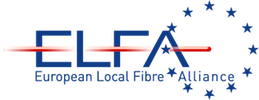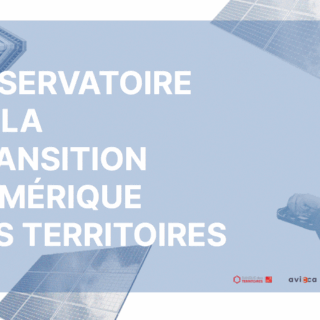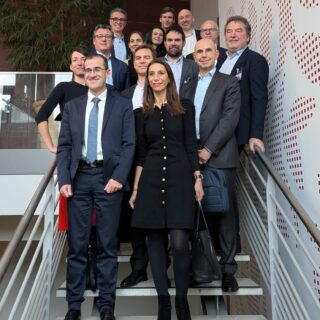European policymakers have come to recognise the importance of providing full fibre networks (FTTB/H) in all parts of the EU not only in order to support first-class connectivity to households and businesses, but also to unlock the potential of 5G-services demanding fibre connections to a very high number of 5G cells. Europe needs to pave the way with fibre across the continent to become a 5G world leader. We are convinced that Member States leading the FTTB/H deployment will also be leaders of the 5G.
Ahead of the upcoming European elections in May 2019, we would like to address three core requirements for the creation of a European Gigabit Society that is built on fibre networks (FTTB/H) to all buildings.
1. Strengthen focus on safeguarding investments in all-fibre networks by non-dominant operators
ELFA welcomes the political agreement in June 2018 on the new European Telecommunications Regulatory Framework – Telecoms Code – including a new objective on promoting access to and take-up of very high capacity networks for all citizens and businesses of the Union.
We especially welcome the fibre focus in the definition of very high capacity networks (VHC). In this respect, we support further sharpening the definition in the direction of fibre networks to all buildings (at least FTTB). In addition, ELFA supports the requirements to secure competition as a prerequisite for regulatory
relief for incumbent operators in the context of co-investments in fibre networks to the buildings.
Cooperation and investment that include incumbent operators and merely aim at technical upgrades of the copper network and other commercial agreements for network deployment, must under no circumstances lead to an automatic regulatory holiday, nor to the automatic phase-out of asymmetrical access regulation. An extension of symmetrical access obligations to non-dominant operators is clearly to be rejected, as such an obligation can lead to an investment restraint for alternative network operators. ELFA therefore welcomes the clear pre-conditions for the introduction of symmetrical access obligations and the
exemptions for operators who open their networks on fair and non-discriminatory terms. A voluntary opening of the networks will speed up the roll-out of fibre networks and provide protection against economically inefficient superstructure.
ELFA urges Member States, BEREC and NRA’s to take due notice of the procedural safeguards of fibre investments in the upcoming transposition of the Telecoms Code into national law protecting competition and fibre deployment by non-dominant operators in both urban and rural areas across the EU.
2. Ensure that EU’s connectivity target meets the expected demand in the European Gigabit Society
In 2016, the European Commission published the common EU broadband targets with the aim of providing Europe with high-speed connections of at least 100 Mbps, upgradable to 1 Gbps, by 2025. Despite the Commission’s sound approach, ELFA believes that this connectivity target should soon be obsolete.
The current EU broadband target focuses only on download speeds. It does not consider the increased need of very high upload speeds and quality parameters such as latency, reliability and energy efficiency. The high upload speeds can support crucial services like cloud/edge computing and two-way videocommunication – including health consultations, elderly care and remote interpretation.
A study conducted by WIK Consult on broadband use in 2025 in Germany concludes that more than 74% of households will presumably demand more than 500 Mbit/s downstream and a similar upstream potential.
ELFA believes that revisiting the broadband targets will send an important message to Member States and industry to promote access to and take-up of full fibre networks (FTTB/H) for all citizens and businesses of the Union.
3. An FTTB/H action plan for Europe
ELFA welcomes the Commission’s 5G action plan and supports the vision of Europe as a global 5G leader. The envisaged 5G mobile radio coverage can only be reached by a comprehensive nationwide/EU-wide fibre infrastructure. We see 5G as complementary to fixed fibre networks. ELFA calls for an equivalent FTTB/FTTH action plan for Europe aiming for an acceleration of dense fibre networks in all parts of the EU not only to support first-class connectivity to households and businesses
An FTTB/FTTH action plan for Europe could promote a joint work between 5G operators and fibre operators in all EU Member States by providing the opportunity for voluntary cooperation’s that use fibre access networks in the front/backhaul of 5G networks.
Last but not least, ELFA welcomes the provisions on the migration process from copper to fibre infrastructure of the incumbent operator laid down in the Telecoms Code. The same rules and deadlines must apply to all market participants. It is of utmost importance that the interests of the companies investing in the fibre roll-out, as well as the interests of those who demand access for wholesale services on the copper network, are adequately taken into account.
An FTTH action plan for Europe is indispensable in view of the EU’s competitive position in the Global Digital Economy. Countries like Japan and South Korea have already entered the Gigabit era – based on a very high coverage and take-up of fibre-based services. China and Russia are pursuing fibre network rollout at a similar level of ambition.
Europe needs to pave the way with fibre across the continent to become a 5G world leader. We are convinced that Member States leading the FTTH deployment will also be leaders of the 5G. – Amsterdam, March 2019
About ELFA
ELFA, the European Local Fibre Alliance, is the shared voice from alternative private and public local fibre operators in the EU. ELFA has been founded to call for a more ambitious European Digital agenda and the acceleration of fibre deployment in Europe to power very high capacity networks (VHCN) to citizens and businesses. Our vision is to create sustainable fibre-based infrastructure in both urban and rural areas across Europe. Members support open access business models and technology neutral access networks






